Antarctica
A sailing trip to the end of the world
Come explore ANTARCTICA, South Georgia Island, Falkland Islands, Cape Horn, Tierra del Fuego & more! The "Sarah W. Vorwerk" provides adventurers, a view of "the ends of earth", glaciers, fjords, waterfalls & wildlife."
Logbook entry of 20:15. Can you imagine, on our way from the Gamma Islands a Minke whale swam a circle around us at barely 40 yards distance. John and Ann are just returning in the dinghy from their first Antarctic adventure. Thousands of penguin couples, together with their offspring, are all squealing as if their very lives depend on it. The sun is low on the horizon and casts a carpet of colours over this strange and wonderful ice paradise. Outside temperature is 2° degrees C , there's no wind and the silence and loneliness are perfect. We are anchored in a small inlet of Paradise Bay, a thousand miles from civilization, surrounded by a landscape of unending glaciers and icebergs.
On four weeks trips we will get under the spell of Antarctica. After crossing the well known Drake Passage in about four days, we can enjoy for almost three weeks the icy pieces of art of this southern continent. Seals lazing on their iceberg slowly float by, penguins peck inquisitively at our dinghies and young whales again and again try to convince our boat to come and play with them.
Apart from just leisure, the trip to these deserted and inaccessible regions will aim for other goals. For universities and other scientific institutes, amateur ornithologists, advertisement and film teams, individual specialized programmes can be organized.
We offer: the ship, the professional knowledge, experience and enthusiasm. What we expect of our fellow passengers: commitment, respect for the natural environment, the necessary means, cooperation and planning, because we want to explore this remote part of the world together as a team.
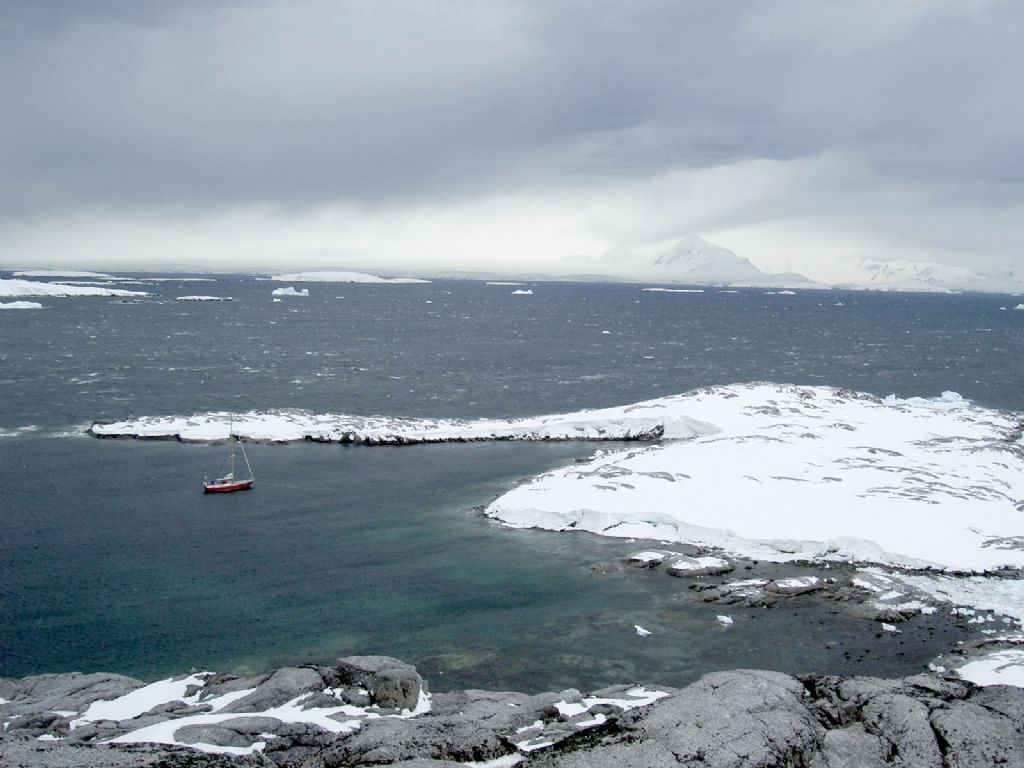
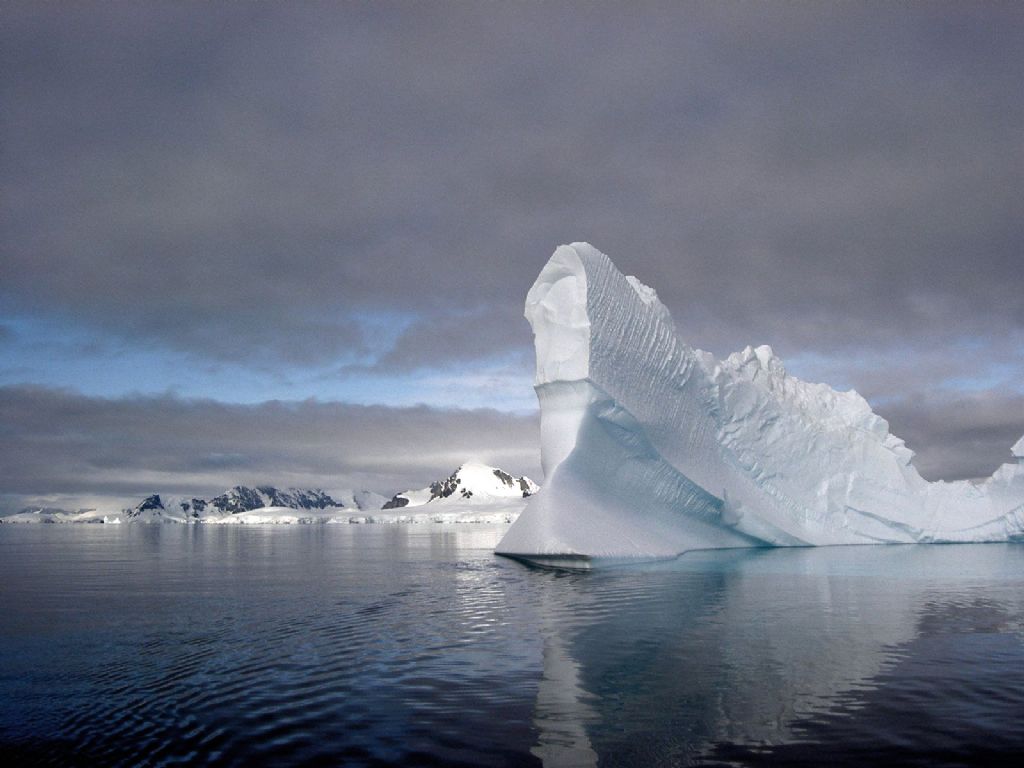

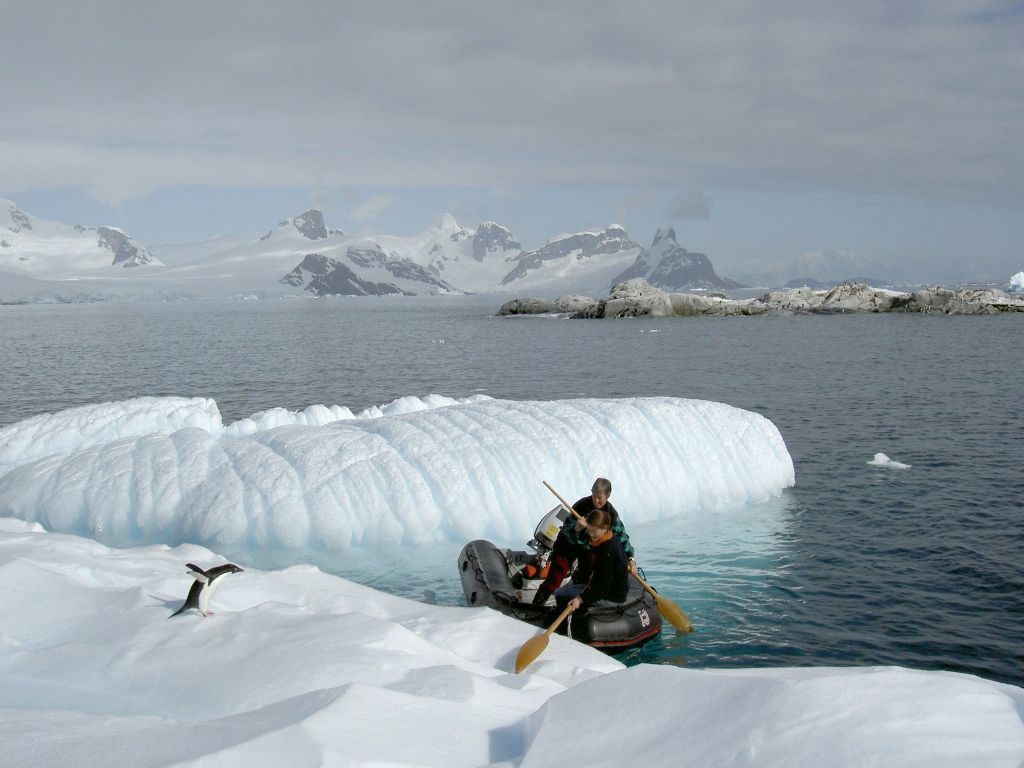
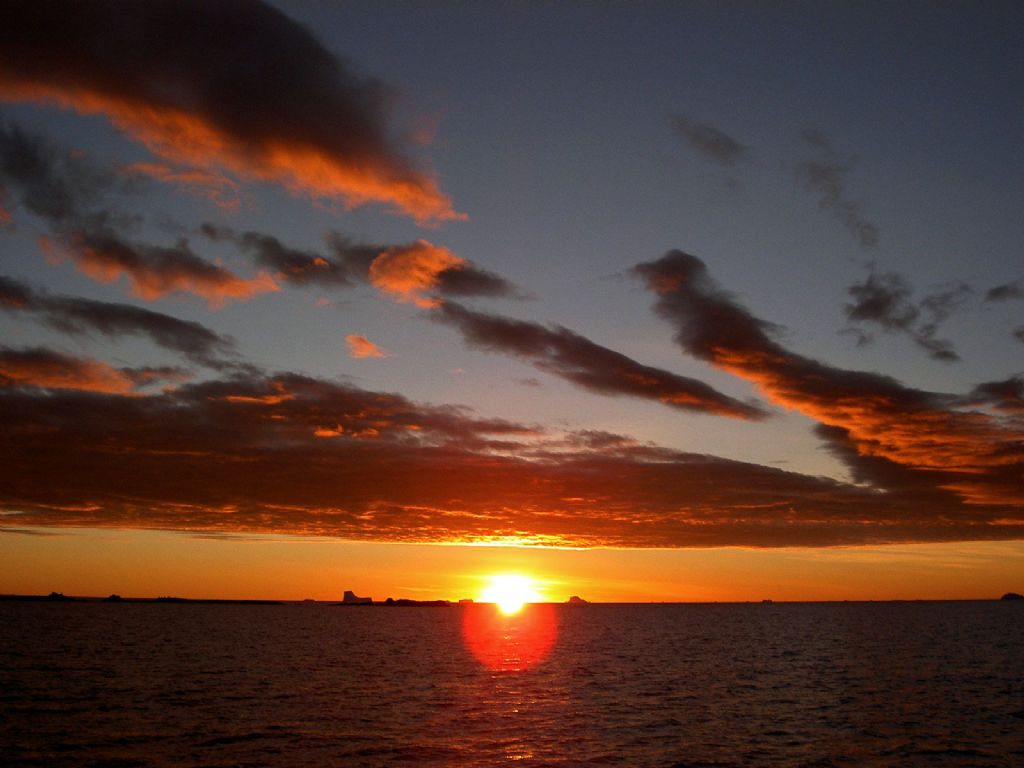
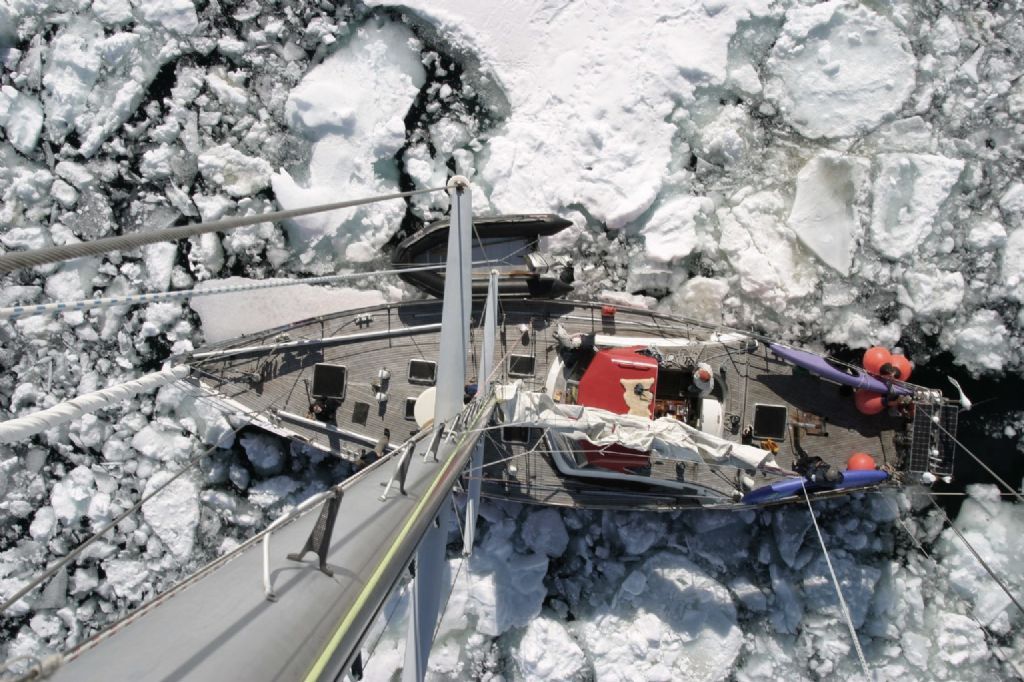
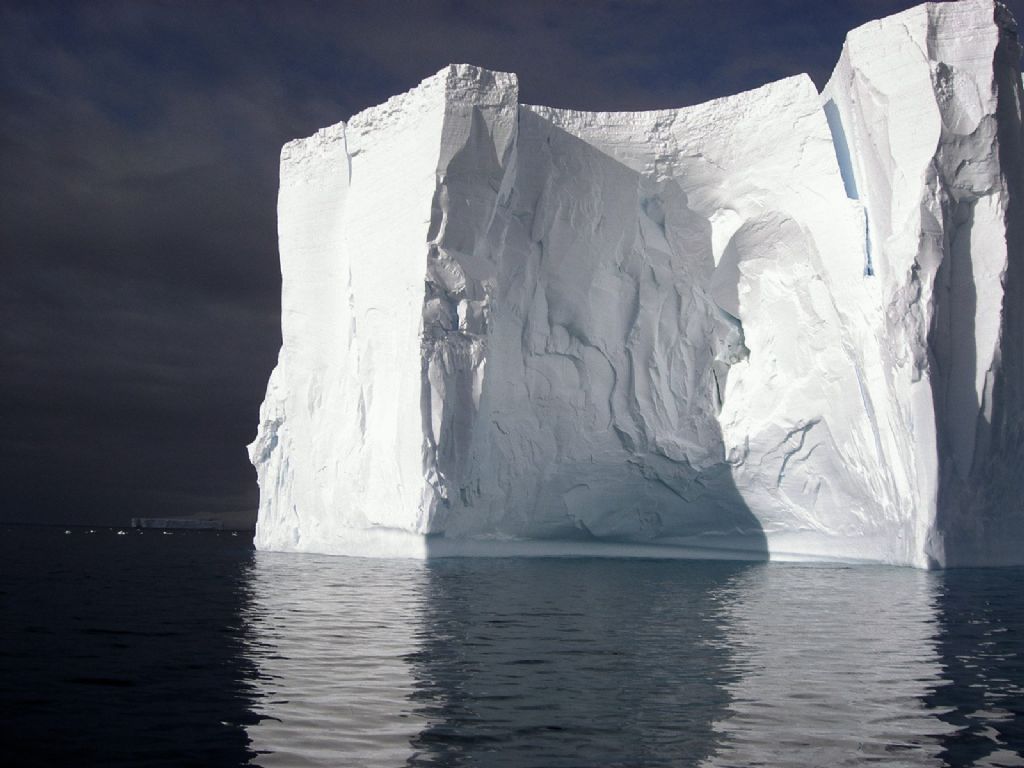
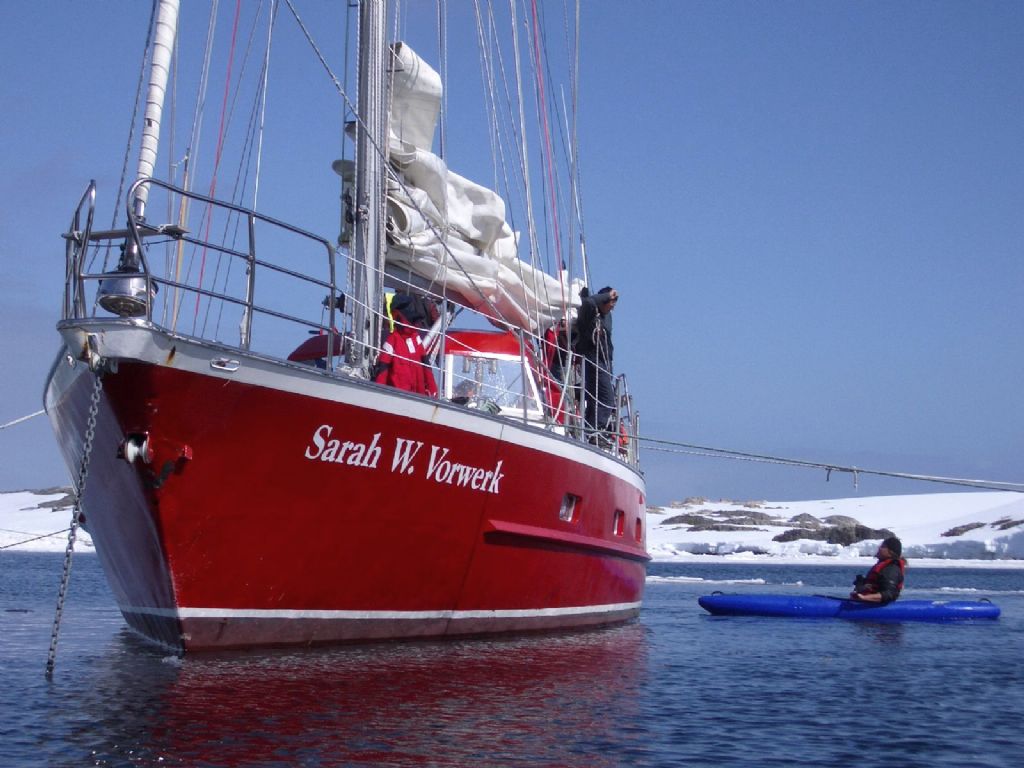
Antarctica, it's that permissible?
Antarctica is the only continent left that is largely untouched by man. This is mainly due to the extreme climatological conditions, in which during millennia of isolation the animal and plant world were allowed to adapt to the adverse conditions. Essential condition for this precarious survivalis however that the biological chain is not broken. Since it is extremely difficult for living beings to survive in such a harsh climate, the biological chain has remained small and each link is closely dependent on the others. Because of this the flora and fauna of Antarctica is in a state of only frail stability. All human activity should for these reasons be regarded critically, as it might disrupt this fragile chain. Fortunately a treaty for the protection of Antarctica was signed in 1991 by almost all countries the world, limiting human interference in this delicate environment. By way of international conventions one hundred locations were designated as protected areas (SPA, SPS, SSSI) in order to protect their biological, scientific or historical values. Because of it, visitors now know how to conduct themselves, thus limiting the negative effects of their interference.
On the basis of scientific data, and of the talks we had with station personnel, we have come to the conclusion that the form of tourism we propose does not have any noticeable detrimental effects on the natural life of Antarctica. Proviso is of course that everyone sticks to the rules. One of those rules is that what you bring in, you will also bring out again. Furthermore, we will take garbage (such as used engine oil) of defunct stations with us on our way back to the South American continent. In this way we can contribute a bit to keep Antarctica clean.
"On the United States' Palmer Station, Anvers Island, an experiment was concluded last summer that aimed to test the negative influence of tourists on a penguin colony. For this experiment, a penguin colony was divided in two with a fence. One halve was left in peace, as before, while the other halve was on a regular basis visited by tourists. Upon the conclusion of the experiment, it was found that the "disturbed" penguins were even less timid than their fellow penguins on the other side of the fence. No other behavioral disorders were found.
Are we the first?
No, of course not, we aren't such reckless adventurers. Judging from the rising number of tourists in recent years (1992 six thousend visitors, 2002 thirteen thousend visitors) there is an increasing interest in this remote white continent. The numbers are not just a reflection of popular interest, but also indicate the increased number of possibilities to actually visit the continent. Thus, the end of the cold war coincidentally left several vessels for "scientific research" decommissioned, rendering them available for use in the tourism industry. Tierra del Fuego has been enjoying larger numbers of visitors for some time now.
A journey to the eternal ice may still sound unreal and dangerous. Fact is however that on average 25 yachts visit the area every year, and that some of these decide to spend the winter there as well, for the fun of it. Clear indications that it isn't all as dangerous as it might sound. Ever since the first yacht of our generation sailed these waters in 1966, disregarding a few bent masts and bumpy landings, no serious accidents have occurred during summer trips.
Itinerary Antarctica
1. Day Ushuaia (54°56'S / 68°06'W)
Beautiful view from the airplane across the Beagle Channel and glaciers - first meeting of your crew at the jetty of sailing club Afasyn - transfer of luggage to the Sarah by dinghy - storing last shopping for the coming four weeks, paperwork to clear out - sailing along the Beagle Channel, we pass Isla de los Lobos: Sea lions, Cormorants, light house.
2. Day Harberton
After having spent a quiet night at anchor we go ashore, visit the farmhouse of the famous reverend Thomas Bridges (writer of a dictionary trying to cultivate the original language of the Fireland Indians) - possible visit to Nathalie Goodall’s Dolphin museum.
3. Day Sailing east in the channel before heading south towards Bahia Nassau
We will pass Puerto Toro: southern most settlement in the world - 50 inhabitants - If the weather is favourable, we cross Bahia Nassau, pass Cape Horn and head out into the famous Drake Passage.
4. - 7. Day Drake Passage
Albatross and Cape Petrel join the ‘Sarah’ – Black browed and Wandering albatross accompany us – we monitor weather by checking weather reports frequently, using twice a day weather fax, daily gribb files and the Inmarsat satellite system – We also maintain radio contact with the other yachts and Antarctic weather stations - Reaching the Antarctic convergence zone: water temperature drops from plus 5° Celsius to 1° C, polar waters with greenish colour and lots of life and the mysterious fog, described in Captain Cook’s bibliography - Who sees the first iceberg? – Watching out for growlers and icebergs keep us busy
8. - 9. Day Hannah Point (62°39’S/60°37’W )
We made it – Relieved, we drop our reliable Bruce (anchor) - cabins get aired , the dinghy prepared,, all ready for the first shore visit. Hannah Point situated at the south coast of Livingston island, has pebbled beaches and sandy slopes perfect for exploring wildlife - Nesting Gentoo and Chinstrap Penguins - Among them two or three couples of Macaroni penguins - Elephant seals in wallow areas - Blue Eyed Shags - Southern Giant Petrels - Kelp gulls and Skuas - Climbing the ridges, beautiful view over to Deception island - At times a Whale blow is visible - Beautiful icebergs float by.
10. Day Deception Island
Spectacular sailing through the entrance into the “crater“ of Deception Island - walks along the shorelines in Pendulum Cove - Whalers Bay - if weather conditions are right, who dares to bath in the hot thermal waters on the “steaming“ shoreline ? Hike to Bailey’s Head possible, with a visit to one of the biggest Chinstrap Colonies on the Peninsula.
11. Day Cape Herschel ( 64°10S / 61°04 W )
Sailing through Bransfield Strait - having a peak into Cierva Cove crammed with spectacular icebergs on the southern side of Cape Herschel.
12. Day Paradise Bay (64°55S / 63°00W)
Big chance to see whales: Minke and Humpback Whales - They often come close to the boat - Chilean station Videla might be visited, as well as some champagne Coloured Gentoo Penguins (Colour mutation of the feathers) - Cormorant colonies - Dinghy cruises - Incredible scenery – Leaving Paradise bay, will we see our first Leopard seal basking in the sun on an ice floe?
13. Day Peterman Island (65°10S / 64°05W)
Lemaire Channel also nicknamed KODAK channel: very narrow channel with up to 1000 meter high rock faces, sometimes huge icebergs get stuck in the middle of the channel - Peterman Island: Circumcision bay - Gentoo and Adelie penguins nesting - Blue eyed shags - Refuge hut, historical features and scientific activities - Maze of islands, rocks, grounded icebergs south beyond Petermann island - Possible kayak tour.
14 - 15. Day Vernadsky Station (65°15S / 64°15W)
The passage to Vernadsky is always an adventure; ice floes, witnesses of the Antarctic winter often make it necessary to look carefully for open water - Impressive glacier walls, beautiful mountain tops - Vernadsky (Ukrainian base): 15 men in summer, 10 during the winter - Former English station (Faraday, discovered with their „Daphne“ the ozone hole. Daphne keeps working and her collected data still gets analysed in Cambridge), station members get a supply ship twice a year only - Sauna, pub, discussions - Visit of Wordie hut (part of British operation Tabarin, mounted in 1943) - Possibilities to: explore ice caves, walks, climb Mt. Demaria from Cape Tuxen.
16. - 17. Day Port Lockroy (64°55S / 63°30W)
We head north to one of the prettiest anchorages of Antarctica - Good chance to meet another yacht or cruise ship – Beautiful view on Fife mountain range - visit Port Lockroy (established in 1944 and operated till 1962, restored in 1996), historical site, museum under Antarctic treaty. Operated by the United Kingdom, the only postoffice in Antarctica. There is a boatshed and a number of artifacts on Goudier island and many Gentoo penguins. After being told to stay at least 10 meters away from wildlife, in keeping with Antarctic Treaty guidelines, we might be surprised, that the penguins do not stick to these rules, but stand practically on our feet and lay their eggs on the footpath up to the station.
Visit to Jougla Point: Gentoo penguins, Blue-eyed shags, Kelp gulls, Antarctic terns, Skuas, Weddell seals, complete, rebuilt Whale skeleton.
18. Day Palmer Station (64°45S / 64°00'W)
If we are lucky, we get permission to visit the American base - very different set up than Vernadsky or Lockroy: thorough biology research - Aquarium – Krill tanks – Exchange with scientists, base workers.
19. Day Arthur Harbour Old Palmer (64°45S / 64°06'W)
Visit ashore; mosses - Giant petrels, beautiful view on glaciers, Elephant seals wallowing - Visiting some of the monitored Adelie colonies, if Palmer gives permission for that.
20. Day Neko Harbour (64°50S / 62°33'W)
Located in Advord bay, named after a whaling factory ship that operated in this region 1911-1924 and frequently moored in that protected bay, a small bay with cobble beach. The glaciers in Neko Harbour are highly crevassed and regularly calve, quite a spectacle - Gentoo penguins, Kelp gulls and Skua breeding area, some species of moss, Argentine refuge hut.
21. Day Cuverville Island (64°41S / 62°38'W)
Island north of Errera Channel - the island is a steep sided dome, two third of which is covered by a permanent icecap - breeders: Gentoo penguins, Kelp gulls, Antarctic terns, Snowy sheathbills, Blue-eyed shags, Wilson’s storm petrels, Skuas, Snow petrels, Pintado (painted) petrels - beautiful anchorage, shallow area with loads of stranded icebergs - incredible views from the top of the island into Errera Channel or due north into Gerlache Straight - Walks - Refilling water tank - Last paddle in kayaks - One of the last sunsets in Antarctica.
22. Day Gerlache Strait / Gamma Island (64°20S / 63°00W)
Regularly frequented by Humpback Whales: they are inquisitive and often stay for more than ½ hour with us, we bring the boat to a stop and let the whales spy at the Sarah, dive under her, „play“. Who does not get enchanted being bathed in whale spray? - Just listening to their blowing is beautiful enough, being able to watch them feed, breach, swim is an unforgettable experience – We head for Gamma Island, part of the Melchior islands - last opportunity for extensive dinghy tours - Preparation for the Drake – Water tank filled up - Dinghy deflated and packed away - Storm jib set - Lee cloth engaged – Sea legs prepared.
23. - 27. Day Drake Passege
We should see the passage with different eyes now; it’s all that much more familiar - Sea birds accompany us again - We head for Cape Horn - How beautiful to see this cliff face again, scent of bushes, flowers in the air, impressive how the swell brakes on the rocks - No wonder this Cape has so many mysteries written about it - Tired, but happy we continue our journey north towards the Beagle Channel
28. Day Ushuaia (54°56'S / 68°06'W)
Heading west towards Ushuaia dolphins welcome us back - Last sail across the Beagle - Sarah’s sturdy mooring awaits us already - Packing - Paperwork for arrival of the boat with the Argentine authorities - Farewells







